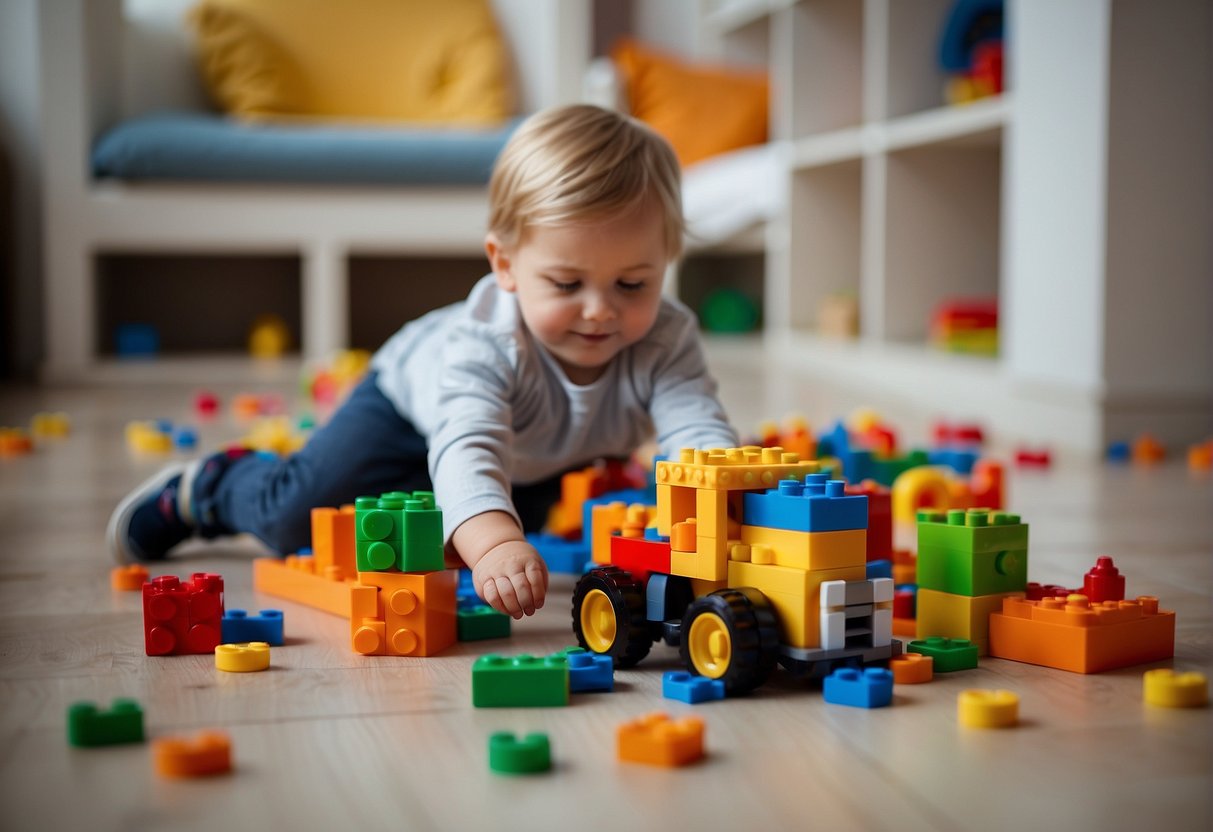As children grow, many parents wonder ‘What Age Do Kids Stop Playing with Toys’ and how it reflects their development. Our article delves into this transitional phase to give you clarity.
Understanding the Developmental Stages and Toy Engagement

When considering the impact of toys on your child’s development, it’s important to understand how play evolves as they grow. Toys are not just a source of entertainment; they are integral to the development of cognitive, social, and motor skills at each stage of childhood.
Early Childhood Play and Learning
Infants (Ages 0-2): During this sensorimotor stage, your baby is discovering the world through sensory exploration and motor skills. Age-appropriate toys that stimulate their senses and encourage hand-eye coordination are crucial. Rattles and soft blocks can aid in fine motor skills development, and musical toys may foster auditory growth.
Toddlers (Ages 2-3): As toddlers become more mobile, their play focuses on cognitive development and problem-solving. Toys that challenge their imagination, like simple puzzles and building blocks, support this growth. Role-playing toys can also enhance social skills and emotional understanding.
Middle Childhood and Shifting Interests
Pre-schoolers (Ages 3-5): Entering the pre-operational stage, children now begin to develop memory and imagination. They learn through pretend play which boosts their creativity and social skills. Educational toys that teach colors, numbers, or letters are beneficial during this period.
School-age kids (Ages 6-12): As kids hit the concrete operational stage, they start to think logically about concrete events. Interests may shift towards games that involve complex problem-solving, strategic reasoning, and learning about the world. Interactive toys that cater to their interests can build confidence and cognitive skills.
Adolescence: The Transition from Toys to Other Pursuits
Teens (Ages 13+): Reaching the formal operational stage, the focus generally shifts away from toys to more mature interests. However, this doesn’t mean play should stop. Teenagers can benefit from hobbies and activities that challenge their cognitive development like model building or video games which continue to refine their problem-solving and fine motor skills.
Play is a dynamic component of your child’s growth and each toy that they engage with plays an essential role in their learning and development.
Toys, Technology, and Age-Appropriate Activities

As children grow, their interests and activities evolve, often reflecting the balance between traditional playthings, modern technology, and physical activities that are suitable for their developmental stage.
From Traditional Toys to Technology
Your child’s progression from toys like building blocks and action figures gradually transitions to embracing technology such as tablets and video games. The shift often begins in the later elementary years when educational toys such as Lego sets and science kits might yield to an interest in programming or YouTube tutorials. Finding age-appropriate video games that encourage problem-solving skills and teamwork can be a constructive part of this technological shift in playtime.
Sports, Hobbies, and Creative Explorations
Physical activities and creative hobbies play a crucial role in your child’s development. Encouraging sports or outdoor activities promotes physical activity and can enhance social skills through interactions with peers. Meanwhile, creative pursuits in art and music offer alternative avenues for expression and hobby development. These activities not only foster individual talents but also build valuable life skills.
Influence of Peers and Environment on Playtime
The environment and peers have a significant impact on your child’s choice of play. Playtime with friends may shift from board games to socialization through sports or digital platforms. The toys and activities children are exposed to in their immediate surroundings, including school and community settings, greatly influence their play preferences. Being attuned to these influences can help you guide your child toward positive and enriching experiences.
Frequently Asked Questions
When it comes to the progression of play and development, understanding when kids typically move away from toys is important. These common inquiries shed light on this aspect of childhood.
At What Age Do Children Generally Lose Interest in Toys?
Children’s interest in toys begins to wane as they develop new hobbies and social interests, which typically happens around the age of 8 to 10 years old. Individual experiences can vary, with some children shifting focus earlier or later than this range.
Is it Common for Children Around 10 Years Old to Play with Toys?
Yes, it is common for some children, particularly around the age of 10, to still find enjoyment in toys, although the nature of play may evolve to include more complex and educational toys as they grow.
What Developmental Stage Do Kids Typically Outgrow Toy Play?
Outgrowing toy play corresponds with the transition into adolescence when children seek to establish their own identity and often develop new interests beyond traditional playthings, which typically occurs between 10 and 12 years of age.
Are There Benefits to Older Children, Like Those Around 12 or 13, Playing with Toys?
Continuing to play with toys at the age of 12 or 13 can still be beneficial, as it promotes creativity and problem-solving skills. In fact, toys that focus on building and exploration can be particularly beneficial for developing cognitive and social skills.
How Does the Transition Away from Toys Differ Between Boys and Girls?
The transition away from toys can vary widely and isn’t strictly determined by gender. However, societal expectations and peer influence may shape how children, including boys and girls, shift their play preferences during preteen years.
What Alternatives to Toys Can Engage Children Who Feel They’ve Outgrown Traditional Play?
Children who feel they’ve outgrown traditional toys may find engagement through activities like sports, music, arts and crafts, or video games. Interactive and educational technology can also serve as an alternative, providing a means of learning and exploration without traditional toys.






